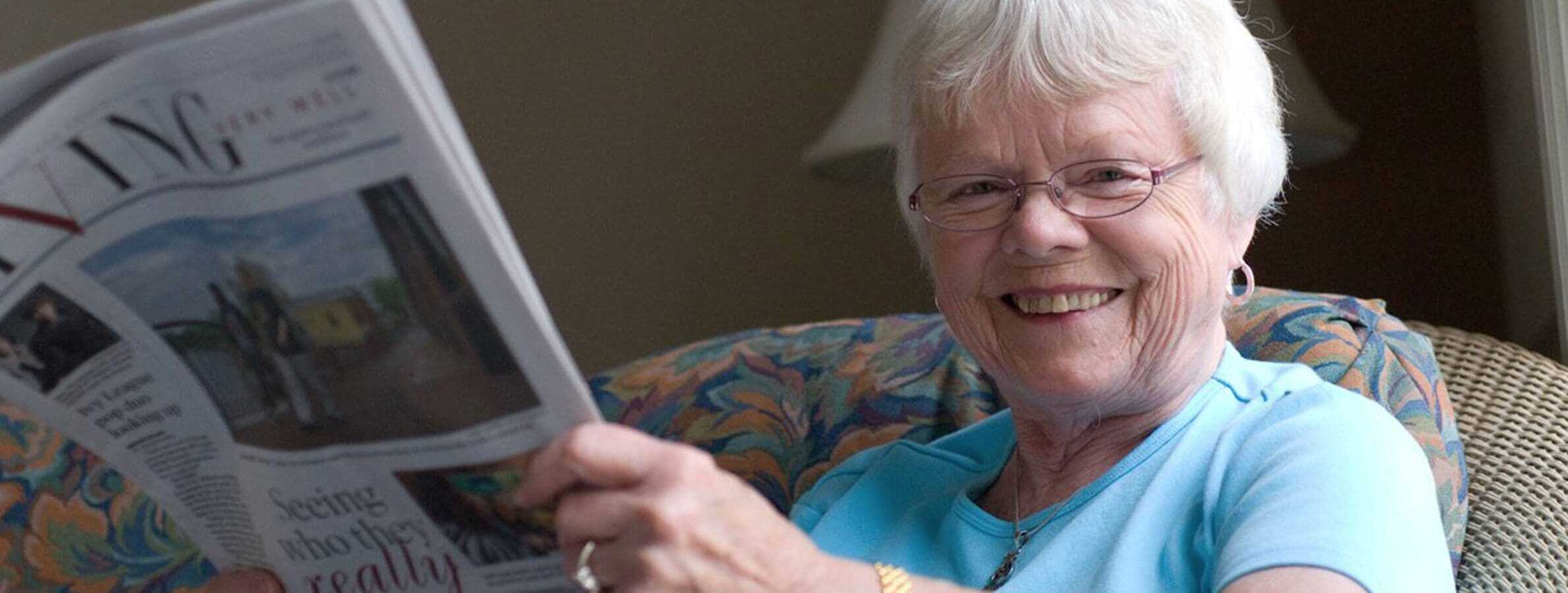Carol Brink knows a thing or two about growing older. In fact, it is a topic she has been thinking about and studying for decades. For her, the subject of aging is a personal one that helped propel a career as a nurse, professor, and researcher that spanned over 50 years.
While Carol learned a lot during her illustrious career at the University of Rochester, some of her most meaningful lessons about embracing all of the opportunities afforded to us later in life came even earlier. “I had many active, vibrant family members—including parents and grandparents,” recalls Carol.
Those family role models showed Carol that there was no reason to be afraid of growing older and she has taken those lessons to heart. Throughout her career and continuing through her post-retirement life, she has made sure to live each day with joy and purpose—all the while promoting a healthy lifestyle. Her positive outlook on aging as well as a strong commitment to volunteerism, leadership, and advocating for others, has made her a role model in her own right. We are proud to announce Carol Brink as the winner of the 2016 St. John’s Embracing Living Award.
Carol entered the nursing field in 1953 after graduating from an Elmira-area high school and immediately began the School of Nursing diploma program at the University of Rochester. She was attracted to the program and the area after a family visit to see her father’s cousin—a physician at Strong Hospital. Carol’s career began with Visiting Nurse Service, and she later spent time in various capacities with the University. She was present when Loretta C. Ford– who was known for starting the first pediatric nurse practitioner program– became the first Dean at the School of Nursing. Soon afterwards, Dr. Barbara Bates started the first medical nurse practitioner program here in Rochester. Always eager to learn more and apply those lessons to her work, Carol naturally became one of the program’s first graduates.
Carol became Director of Nursing for the Anthony L. Jordan Health Center as well as an assistant professor of nursing in community health in the early 1970’s. She was certified as a nurse practitioner in adult health and later as a gerontological nurse practitioner. A few years later, Carol’s focus on aging intensified when she was teamed up with Dr. Thelma Wells. They developed a master’s level program specializing in the care of older adults.
Carol and Thelma became the first researchers to study the causes and effects of urinary incontinence in women. They were subsequently funded by the National Institute on Aging (NIA) to study nursing interventions in older women. Their research eventually led to the creation of the first continence clinic in Ann Arbor at the University of Michigan, where Carol served in a prominent role as clinical coordinator. Carol eventually returned to Rochester (as did Thelma) where they continued their research for several more years.
Carol’s work has been celebrated several times in the years since her retirement 15 years ago. Among the accolades, she was named an associate professor emerita of clinical nursing at the University of Rochester and also has a professorship named in her honor. She herself is now considered “a pioneer in geriatric care and research”—and rightfully so.
Carol’s ties to St. John’s were forged during her years as a nursing professor. “I would bring my students to St. John’s to do their clinical. It was great to see them blossom from this experience.” Over the last 10 years, Carol has served as a member of the St. John’s Board of Directors. Carol became one of the first residents at Brickstone by St. John’s when she moved into her bungalow-style home in 2012.
Today, Carol finds plenty of meaningful things to do with her time. She is an active member at Midtown Athletic Club, spending weekday mornings exercising and socializing with a group of like-minded individuals. Then there are the programs and social events at Brickstone by St. John’s, including her membership in the Brickstone Chorale. “Since coming to Brickstone, I have found that there is so much going on here,” she says. “I look at my calendar and am grateful to be retired and living in this very special community.”
What has surprised Carol—a bonafide trailblazer in the field of aging—as she herself has grown older? For those who know her and see firsthand how she has approached life over the years, her answer isn’t surprising at all. “I have to remind myself periodically of how old I really am,” she explains. “Because I don’t feel any different than I did twenty years ago.”
